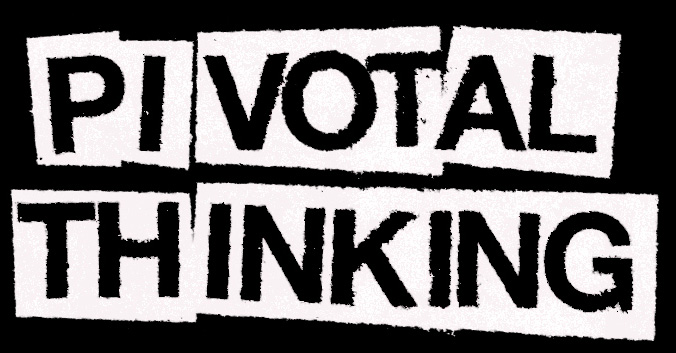
Communications for the Educational Sector: A New Strategic Imperative
By Mathieu Bédard
Welcome to the educational sector : where the diversity of audiences, the ever-changing social trends and the precise ethical lines to follow create a labyrinth of challenges for marketers. That’s even before we throw in serious issues like student dropout rates, skyrocketing living costs, cutthroat competition along with the struggle to find qualified teachers. And on top of all that, don’t forget the need to stand out with unique brand differentiation and authentic marketing efforts. We've got ourselves a communication puzzle like no other.
It’s not like institutions lack a variety of communication tools to deploy their recruitment strategies — from internal messaging and brand-building through many advertisement channels to social media content. Yet, despite the varied methods, the need for impactful communication is all too evident. To achieve our goals, we must think outside the box, steer away from the usual expectations, avoid recycling old strategies and pursue cohesive marketing akin to what successful brands do. In essence, educational institutions must embrace their identity as brands.
Do we really “get” our audiences, especially the younger demographic? And how about the role their parents play in the decision-making process? It’s crucial to size them right, but do we have the keys to effective student, parent or even teacher recruitment campaigns? How can we develop consistency and cohesion through a brand language that adapts to different challenges and cultures? Let me attempt to provide some insights and answers to important questions in order to outline potential solutions.
There Is Young And There’s Young
When it comes to communicating with the younger demographic, two major challenges arise. The first is our stance. It’s hard to sound like sympathetic adults without forcing it, but it doesn’t mean we attempt to emulate their slang and subtle codes. Then comes the second challenge: understanding specifically who amongst young people are we trying to reach: Gen Z? Gen Alpha? The point is, there's a distinct difference between marketing a high school open house to primary school students and trying to engage with 16 to 18-year-olds to get them in your college or university abroad.
Missteps in tone or generalising can harm an institution's brand, underscoring the need for well-thought-out strategies that resonate on a genuine level. Communicating effectively with young people means navigating a fine line between relatability and authenticity. It's essential to stay true and avoid playing a game whose rules we don't fully understand.
Recruitment Campaigns Transposing to Real Benefits
For many educational institutions, especially private ones, recruitment campaigns, roadshows and open house events are major budget items. With fierce competition and subtle differentiators, many campaigns end up interchangeably communicating too-generic promises. To succeed, organisations must resonate with their audience, communicate consistently, adapt to different realities, and focus on the benefits they offer.
Secondary School Recruitment: Bridging the Gap
When it comes to recruiting students at the secondary or high school level, we must imperatively appeal to children generally aged 10 or 11, but also to their parents. These two targets, whose motivations and expectations will be fundamentally different, can be likened to the two hemispheres of the same brain. The right hemisphere, which we associate with children, will be more stimulated by sensations, emotions, and everything that can be associated with implicit symbols that communicate daily pleasure, the dynamism of the experience, or even its colour and vibrancy (to not say “vibe”). Without getting bogged down in details, children will struggle to intellectualise their own educational journey over a period as long as five years. Therefore, they’ll want to ensure that they have fun "tomorrow" in a secure and humane environment where their passion for a sport or an activity can be channelled.
On the other hand, the left hemisphere, more rational, represents the parents, who will place great importance on academic and infrastructure quality, access to a strong network and connections, but also on guidance. They keep a longer-term perspective with their children's academic success in mind, in a place that will lead them to a higher level in the best possible position later in life. Occasionally, and quite frankly it might be considered taboo to admit, parents may also seek to enhance their social standing through the selection of their child's school. Winning parents over necessitates the deployment of refined communication strategies and tactics that cater to a variety of concerns with precise messaging.
Attempting to distil the diverse appeals of both brain hemispheres into a single slogan or image is usually ineffective, a practice yet common in mainstream media and school marketing. Triggering an effective and engaged reaction requires a broad campaign that separately addresses each target—youth and parents—with tailored tactics, while ensuring a cohesive overall strategy. The key is to segment communication tactics while keeping a strong link between them.
Envisioning Higher Education Attractivity Level
Without delving into a detailed analysis of Generation Z's (1995-2009) traits and triggers, it's clear they are highly digital, socially committed. This generation is tech-savvy and constantly exposed to new options and trends. These young adults are reshaping the social narratives by challenging many paradigms, prioritising diversity, inclusion and sustainability. In attracting them to college or university programs, it's crucial to psychologically project them into a promising future, primarily through authentic human representations in which they can credibly see themselves. This could be through advertising concepts or testimonials, but must always be sincere. The values and ideals of the institution need to be more visible than ever. The goal is to finely identify the features that connect youth to a specific program, establishing a fruitful compatibility by focusing on the right benefits.
Employer Branding for Education: Unique And Fulfilled Promises
Employer branding in education doesn't really differ from that in other sectors, especially with the ongoing teacher shortage in many areas of the world. There's no magic solution. As the saying goes—avoid putting lipstick on a pig!
The essence lies in creatively and attractively translating what makes the employee experience unique in a particular educational institution, without promising an unrealistic day-to-day life. Thus, everything begins internally. You start with diagnostics and analysis that lead to a positioning of the employer brand, its employee value proposition (EVP), and, crucially, you make sure to tie it to the overall employee experience so that it is truly felt in the creative recruitment campaigns. The institution's reputation, its specialties, and certain subtle cultural attributes will dictate additional nuances specific to the audience that’ll help the creative work feel more authentic.
Recruitment and Employer Branding in Education: Crossing Borders
Globalisation allows students and the workforce to move easily across continents and cultural realities. Many institutions will need to expand their recruitment efforts internationally. Understanding cultural and social contexts, especially educational sector challenges, emerging trends, localised "personas" and validating key messages for benefits that appeal to different markets is already crucial. Adapting creative concepts with cultural sensitivity, as well as considering the varied media and digital consumption habits across countries, is essential. For instance, the academic calendar differs significantly worldwide, requiring tailored campaign seasonality.
This underscores the importance of thorough preparatory work, including strategic planning that aligns broad goals with the need for international campaigns. When venturing internationally, it's vital to plan from the outset, avoiding the pitfall of mere linguistic adaptation without a deep understanding of the target markets. Few institutions manage this without support, but when done successfully, the outcomes can be significantly impactful.
Cohesion is Forged in Truth and Rigour
In education, branding for institutions is fundamentally linked to the actual experience they offer as an establishment. The teachers, support staff, students, and parents not only need to relate to that. They must want to be part of it. No amount of publicity, student recruitment, or employer branding initiatives will succeed if the reality they’re based on isn’t compelling or unique. Expert intervention is vital in this context, either to highlight what makes an institution unique or to address major challenges that need resolving for communication efforts to be effectively profitable.
Ideally, an institution will invest in a sustainable and adaptable brand concept and creative platform, serving as the cohesive thread across various communication efforts (like campaigns for student, teacher recruitment, etc.). This consistent storyline derived from the main brand and granular analysis will amplify the organisation's strengths and imbue its audience with relevance and truth. The end results are more achievable strategic goals through genuine communication investments.
About Mathieu Bédard
Mathieu Bédard is the CEO and principal partner of the international creative agency Camden, with offices in Canada, France, and Hong Kong. A graduate in advertising from the Université de Montréal, he has over 20 years of experience in branding, advertising creation, and employer branding across a broad range of industries, including education. He has served as a guest lecturer at several universities and has regularly contributed as an expert or columnist to numerous media outlets on different continents.



